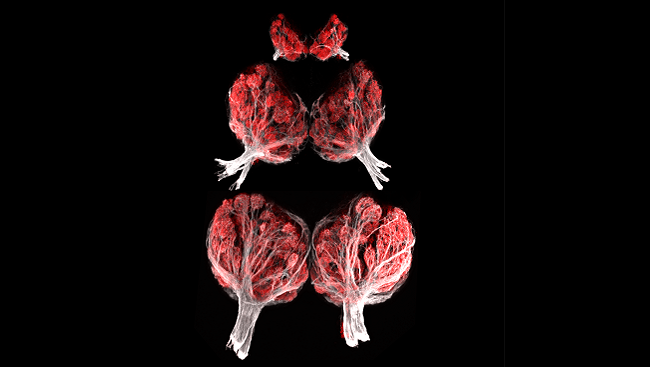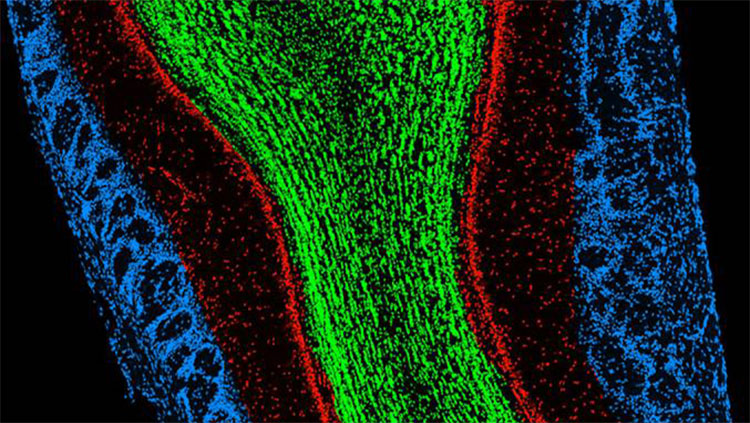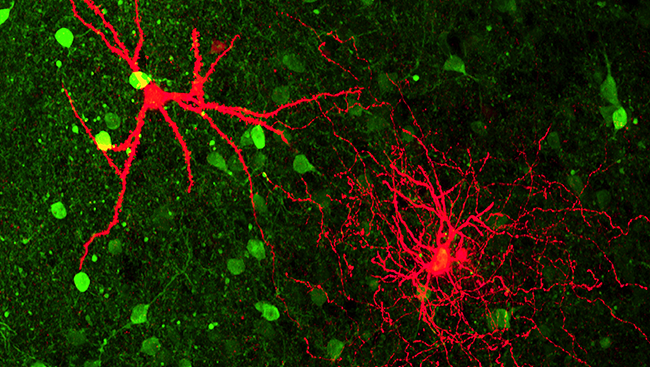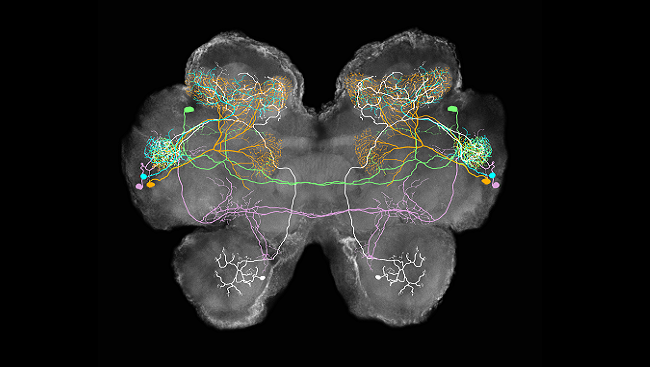Smells Shape the Brain
- Published18 Oct 2013
- Reviewed18 Oct 2013
- Author Michael W. Richardson
- Source BrainFacts/SfN

The olfactory bulb — the brain structure that receives smell input from the nose — changes substantially over the course of early development. This image shows how the olfactory bulbs of the zebrafish Danio rerio grow in both size and complexity (from the youngest at top to oldest at bottom).
The spherical structures that appear in red, called glomeruli, receive input from nerve fibers that carry information about smells. Scientists found out that while some of these glomeruli remained relatively unchanged over the course of early development, others emerged and developed in response to different scents. This discovery is providing new insight into how experiences can physically affect the development of sensory systems.
CONTENT PROVIDED BY
BrainFacts/SfN
Also In Smell
Trending
Popular articles on BrainFacts.org


















